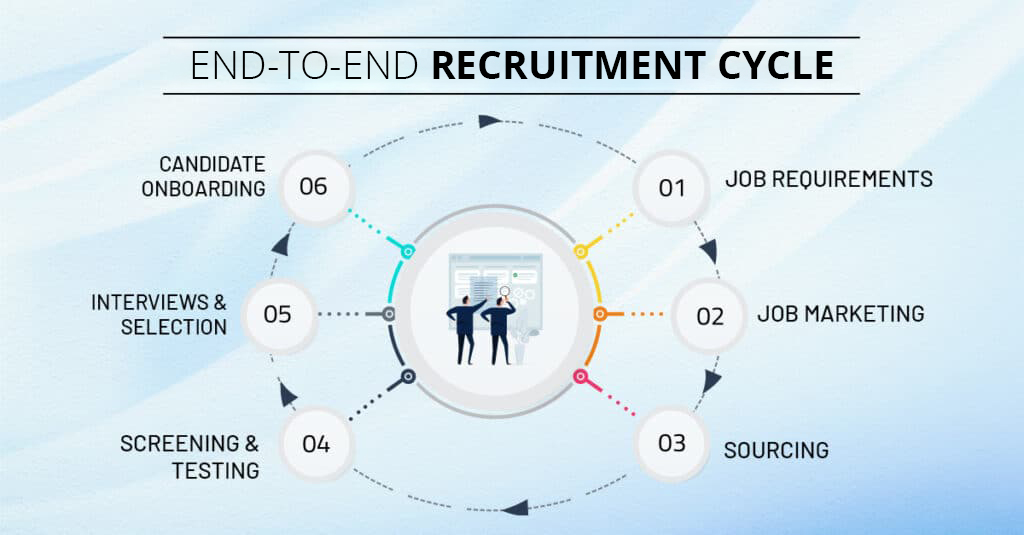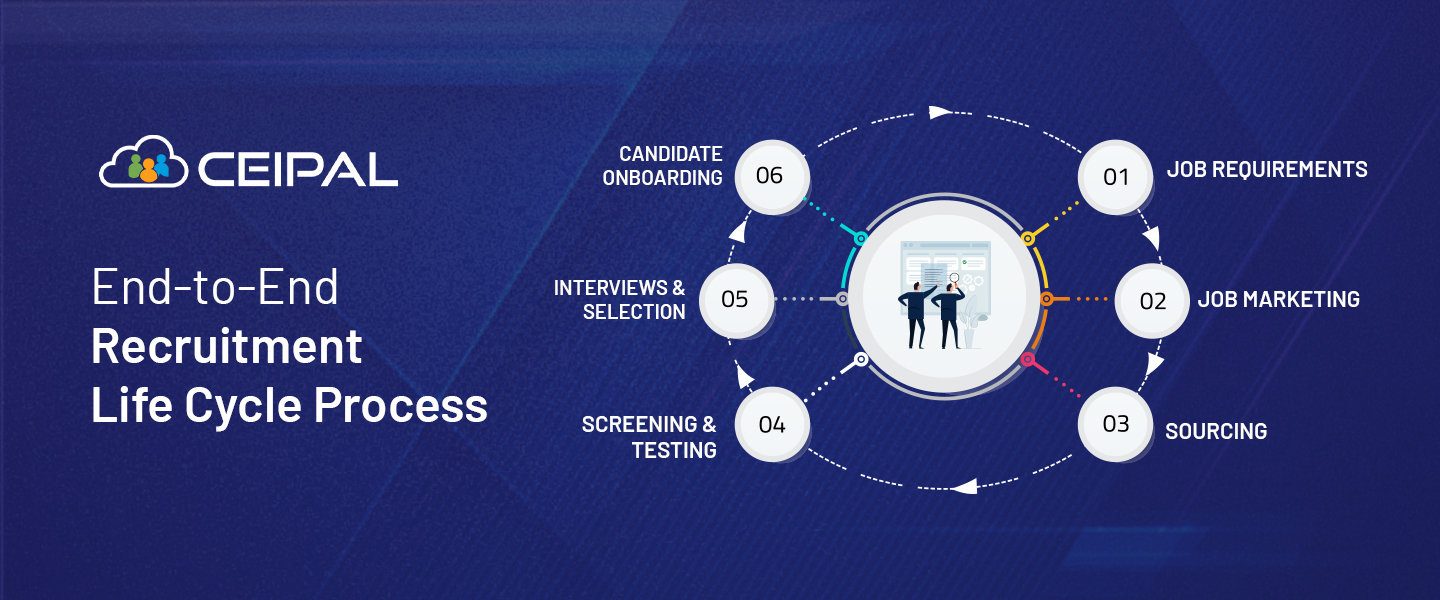“Full life cycle recruitment” is the complete recruitment process that starts with posting a job and sourcing candidates and ends with placement and onboarding. Recruitment is one of the most critical business activities of any company and requires a thoughtful and highly effective strategy.
The Life Cycle Diagram

Job Requirements
Recruitment starts with the hiring team establishing job requirements from a combination of internal processes or external clients. Once the job requirements are determined the recruiters and hiring managers have to:
- Write interesting job descriptions (including information about the job role, qualifications, job location, career growth, company culture, perks, benefits, etc.)
- Create appealing job advertisements
Job Marketing
In order to attract qualified and quality talent, jobs have to be posted in a variety of channels, including job boards such as Indeed, Monster, LinkedIn, and Naukri, as well as social media platforms such as Facebook, Instagram, etc. Paid job boards and posts allow companies to bid for job openings and rank higher than the competition.
Sourcing
Recruitment includes finding candidates from multiple channels and adding them into your recruitment pipeline. With an advanced ATS, recruiters can build and manage huge databases of talent and applicants.
There are multiple sources from which a recruiter can source a candidate:
- Job boards
- Referral programs
- Social media recruitment
- Talent pool
- Career sites
- Campus drives/recruitemnt fairs
- In-house recruitment
Screening & Testing
With the help of an Applicant Tracking System (ATS), recruiters can source candidates according to their skill sets, job locations, experience, and qualifications with advanced filters. The AI algorithms then create a list of candidates, who are best matched for a particular job, complete with compatibility ratings and culture fit ratings. Once there is a shortlist of candidates, they can be screened using tests. Recruiters can then review findings and share any necessary feedback with the candidates.
Interviews & Selection
Recruiters need to manage multiple interview schedules, calendar invites for all stakeholders, and feedback for candidates. At this stage, a recruiter has to make sure that all the candidates have a positive candidate experience and that there are no technical issues during the calls. After a series of interviews, recruiters will have the candidate profiles they need in order to extend job offers.
Candidate Onboarding
Onboarding is critical. Most recruiters use e-onboarding platforms to help candidates get the best experience possible without the hassle of a physical office visit. Through an e-onboarding platform, recruiters can create a checklist of documents required to be submitted by the candidate. Once the candidates upload their documents and provide their digital signatures and confirmations, they’ve successfully onboarded the candidate as an employee.
Improve Efficiency With Automation
The full recruitment life cycle enables companies and staffing agencies to create positive candidate experiences, improve engagement, and increase conversion rates. Using an ATS enables recruiters to centralize every possible process into one platform, so they can reduce the time and costs associated with hiring new candidates, while also creating long-lasting relationships.









